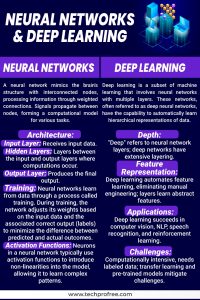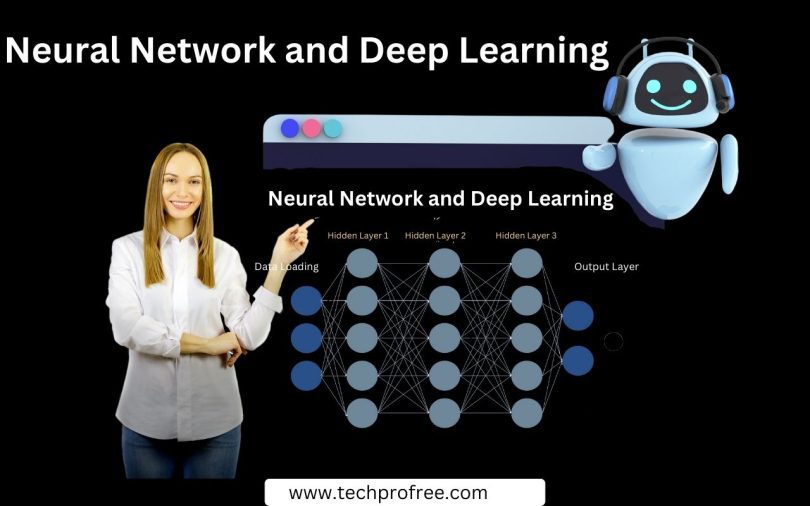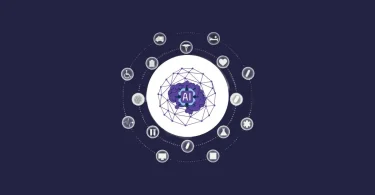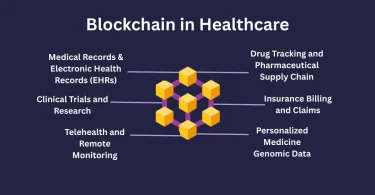Understanding Neural Network:
Deep learning essentially involves neural networks that are sometimes referred to as artificial neural networks (ANNs), synthetic neural networks or simulated neural networks (SNNs). Neural networks refer to naming and structure based on processes that happen in brains between communicating nerves (biological neurons).
An ANN is a network with a layered structure containing input, hidden and output nodes. Every artificial neuron or node that connects with others has on its part a weight and a threshold. In case the output of a particular node exceeds the given limit, then there is an activation and the signal further passes to the next level. The opposite happens when the output is less than the threshold and no data passes on to the other level.
Neural networks depend on training sets that gradually improve precision. When these learning algorithms are perfected, they become some of the powerful tools that help in fast classification and grouping of information. Such jobs such as speech or image recognition are performed faster than human experts that take hours to identify them one at a time. The most popular neural network is used by Google for search algorithms.
What is Deep Learning?
Deep learning, which belongs to machine learning, refers to self-learning and improvement by means of analyzing computer algorithms. Machine learning is simpler in concept but uses artificial neural networks which imitate human thinking and learning. The increased power of computer processing has caused neural networks to become more versatile and complex through big data analytics. That is how computers can observe complex situations faster than humans, learn and act accordingly. Deep learning has significantly contributed to tasks such as image classification, language translation and speech recognition, capable of solving diverse pattern recognition problems without human intervention.
These DNNs help push deep learning. These networks whose activities are highly compounded in every level are involved in the interpretation of images, sound and texts through representations and abstractions. Deep learning considered one of the most promising approaches to machine learning, is recognized as a highly disruptive digital technology. It is rapidly used by many organizations to generate novel forms of business and enhance efficiency.
Neural Networks vs. Deep Learning:
This is what makes people sometimes confuse terms such as deep learning and neural networks. However, it’s worth noting that “deep” in deep learning simply means the dimensionality or number of layers within an artificial neural network. Any deep learning algorithm should be a neural network with multiple layers including input/output networks. On the other hand, a neural network with merely two or three layers is referred to as a primitive neural network.
Difference between Deep Learning and Neural Networks:
One specific technique under AI is known as deep learning that teaches the computer to process data as it relates to brain function in humans. It enables models to understand the relationships between various elements of data like images, text, or sound and therefore get more precise results. Deep learning is based on a fundamental technology known as neural networks. These are structures organized as layers and consist of interlinked nodes (neurons). Together, these nodes process data, provide feedback, learn from failures and improve overall system output.

Key Differences:
Architecture:
Neural Network (Feedforward): A single hidden layer involves nodes in one layer connecting to each node of the adjacent layer with usually only one connection.
Deep Learning Systems: Deep architectures such as CNNs and RNNs incorporate several hidden layers.
CNN Architecture:
The components of CNN are comprised of convolutional layers, pooling layers, fully connected layers.
Handling changing inputs in dimension and size, suited for processing images and videos.
RNN Architecture:
Directly coupled, recurrent units.
Suited for language tasks like modeling, speech recognition, and sentiment analysis
Complexity:
Neural Network: A small number of parameters (weights and biases).
Deep Learning Systems: More layers of increased complexity which require higher computing power.
Training:
Neural Network: Fewer layers and connections, therefore trains faster.
Deep Learning Systems: Take longer and cost more to train than average, but can learn complicated patterns and skills.
Performance:
Neural Network: Suitable for basic tasks like picking up simple patterns or grouping of data.
Deep Learning Algorithms: To handle large data volumes and carry out sophisticated tasks such as NLP and speech recognition.
However, all deep learning systems use neural networks; there are technical nuances such as architecture, complexity, learning issues and capabilities. Neural networks are simpler, while deep learning systems that comprise of multiple layers are better at dealing with complex problems and complicated data patterns.
Advantages of Neural Networks:
Unlimited Output Potential:
ANN does not depend just on initial input allowing for different kinds of implementations like robotics or pattern recognition.
High Fault Tolerance:
Can self-heal and diagnose network problems independently. For example, ANN can effectively screen through an extensive collection of logs files thus taking over the administrators’ role in a manual approach.
Efficiency in Nonlinear Systems:
Neural networks work best as efficient solutions of computationally expensive problems with nonlinear systems. In such industries as banking, this is obvious when the network quickly gives those responses, which would be taken a day or month through usual ways.
Future Outlook of Neural Networks:
Expect an ongoing development of neural networks fueled by rapid deployment of AI and machine learning. However, personalized digital experiences will be offered globally, transforming applications in mobile and web services based on users’ histories.
The development of virtual assistants including Google Assistant and Siri will go on with the possibility of predicting e-mails’ answers and more simplicity in our daily matters leading to an even more convenient life.
There will be continuous breakthroughs in algorithms for supporting learning techniques that improve the efficacy of the neural networks in different fields. Nevertheless, this is the early stage for the application of AI and neural networks that has a big room for growth.
In future, neural networks will become faster with tools incorporated in different design surfaces that work seamlessly. Affordable processing boards/laptops will contain miniaturized neural networks that will help speed things up. Neural networks will continue to dominate many sectors of the economy including medicine, agriculture, physics and research. The uses that neural network has are innumerable and continue growing with time.
Conclusion:
Finally, neural networks and deep learning are among the leading technologies in artificial intelligence that imitate our own neuron processes. Deep learning depends on neural networks, which are ANNs of multiple layers that process complex data. Over time, learning algorithms become excellent instruments for fast classification that can surpass human specialists in speech and image recognition. One of the subsets of machine learning is deep learning which is based on self-learning algorithms that are able to identify the complex data patterns. Big data analytics has contributed to computational power; as a result, neural networks have reached new dimensions of flexibility. Sophisticated deep learning systems, including Convolutional Neural Networks (CNNs) and RNNs, are complex enough to handle complex tasks like natural language processing. In the future AI and machine learning will become more prevalent, leading to the evolution of neural networks. Personalized digital experiences, intelligent virtual assistants and innovations in learning algorithms are expected in future. With the improvement of speed and integration of neural networks in different applications, they will spread to different areas like medicine, agriculture, physics and research. This is the start of a revolution that will not stop spreading and there are many applications that can be derived from neural networks.




Leave a Comment